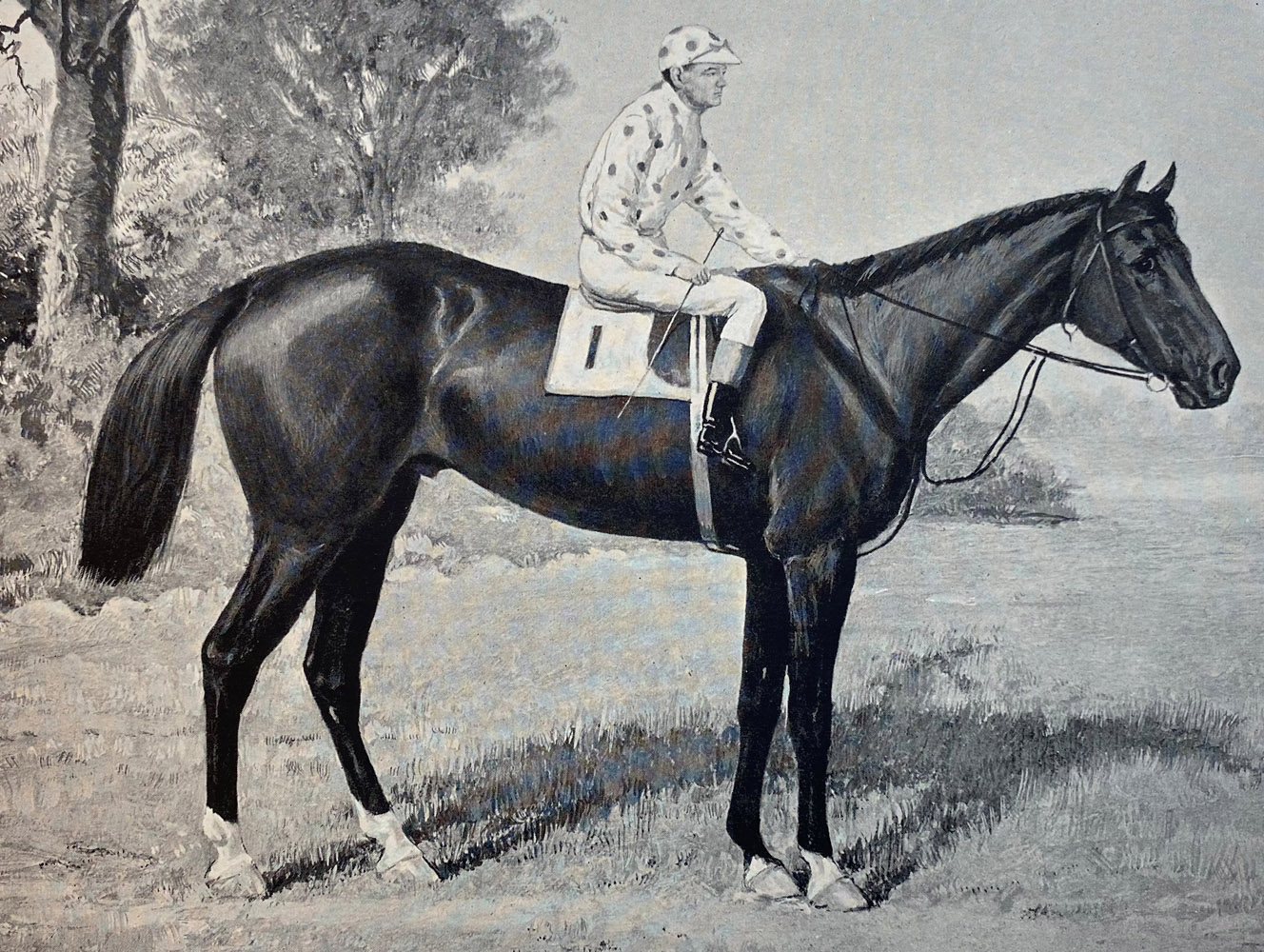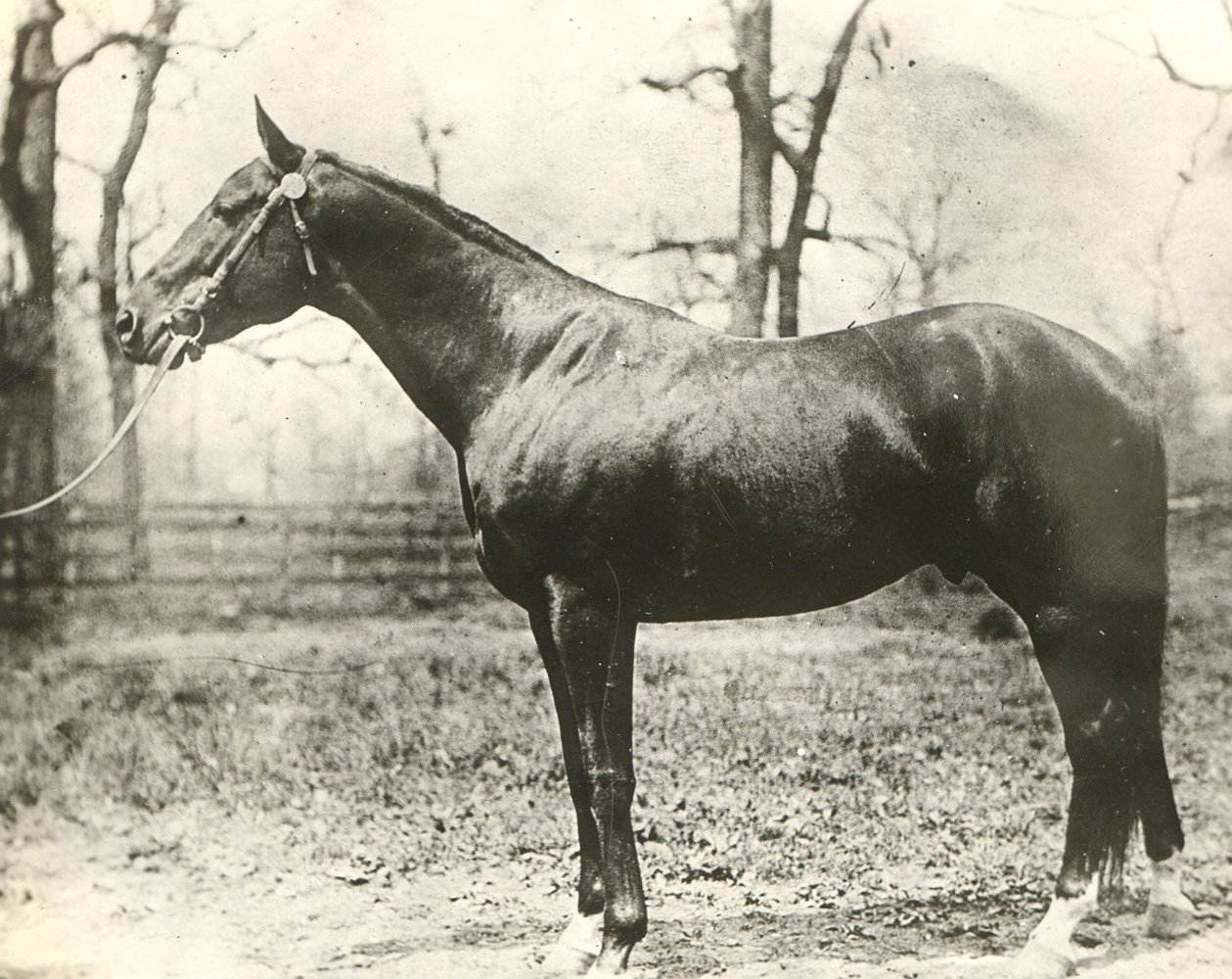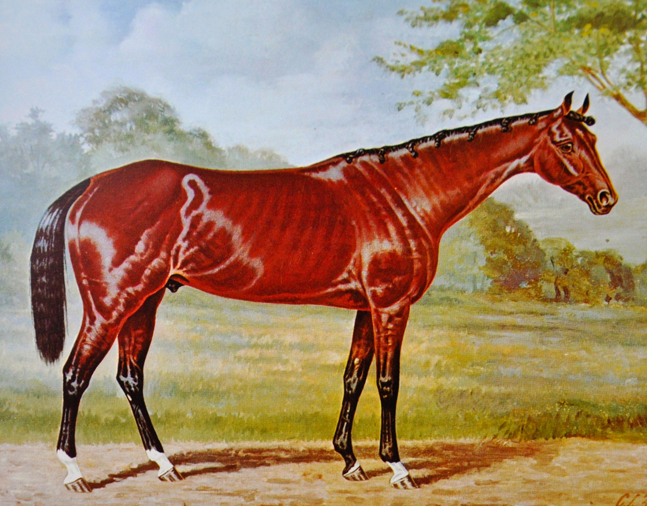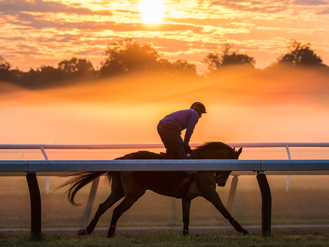Commando (KY)
Bred and owned by James R. Keene, Commando was the most successful son of Hall of Famer Domino, one of the finest runners of the 19th century. Although his career was brief, Commando was a brilliant performer and was recognized as Horse of the Year in 1900 and 1901.
Racing Record
9
Starts
| 1900 | 6 | 5 | 1 | 0 | $41084 $41,084 |
| 1901 | 3 | 2 | 1 | 0 | $17112 $17,112 |
Biography
Bred and owned by James R. Keene, Commando was the most successful son of Hall of Famer Domino, one of the finest runners of the 19th century. Although his career was brief, Commando was a brilliant performer and was recognized as Horse of the Year in 1900 and 1901.
A dark bay with four white feet, Commando was described as a “big, coarse, muscular colt with low withers, high croup, and great depth in chest and flanks.” Commando made his debut June 25, 1900, at Sheepshead Bay in the $1,000-added Zephyr Stakes. He behaved badly at the post and delayed the race for a considerable amount of time, but once jockey Henry Spencer got him under control he quickly displayed his class. Commando ran to the lead and had no trouble winning by two lengths.
Five days later, in the $20,000-guaranteed Great Trial Stakes, Commando again went to the lead early and coasted to a three-length victory over The Parader. Commando then won the $3,000 Montauk Stakes at Brighton Beach by eight lengths three weeks later before getting a month of rest.
Commando returned with a victory in the $10,000 Brighton Junior Stakes and followed that with a win in the $15,000 Junior Champion Stakes at Gravesend under 127 pounds.
In his final start as a 2-year-old, Commando suffered his first defeat in the $20,000 Second Matron at Morris Park in October. Goodwin’s Guide noted Commando was “carelessly ridden” by Spencer. Favored at 5-2, Commando had a two-length lead at the eighth pole, but Spencer began to gear Commando down and apparently did not notice Beau Gallant on the inside. Before Spender could get Commando going again, Beau Gallant slipped ahead and won by half a length. A reporter for Turf, Field and Farm described Spencer’s ride as “stupid carelessness; (he) literally threw the race away.”
The loss did little to hurt the reputation of Commando. He was regarded as Horse of the Year for 1900, posting a season record of 5-1-0 from six starts and earnings of $41,084.
Rowe selected the Belmont Stakes as Commando’s first race as a 3-year-old in 1901. The Belmont was contested at 1⅜ miles at Morris Park that year on May 23. Commando had only two foes that day. He defeated The Parader by two lengths and the overmatched All Green finished some 50 lengths out of the picture.
A week later, Commando gave 15 pounds and a three-lengths beating in the Carlton Stakes at Gravesend, winning the mile in 1:39⅖ “with ridiculous ease.”
On July 4, 1901, Commando was brought out for the final time in the 1⅝-mile Lawrence Realization. He followed the pace closely for the first mile before moving into the lead. Commando, however, broke down near the end and The Parader won by two lengths.
Commando was retired with a career record of 7-2-0 from nine starts and earnings of $58,196. His victories in the Belmont and Carlton were viewed as enough to earn Commando the unofficial retrospective honor of Horse of the Year once again. Upon retirement, Commando was sent to Keene’s Castleton Farm for stud duty. Of his 27 foals, 10 were stakes winners, including Hall of Fame members Colin and Peter Pan.
In March 1905, Commando suffered a severe injury when he stepped awkwardly on a rock. Tetanus set in and he died within 48 hours at the age of seven. The success of Colin and Peter Pan placed Commando atop the American sire list posthumously in 1907.
Achievements
Horse of the Year — 1900
Champion 2-Year-Old Male — 1900
Horse of the Year — 1901
Champion 3-Year-Old Male — 1901
Triple Crown Highlights
Won the Belmont Stakes — 1901
Media








